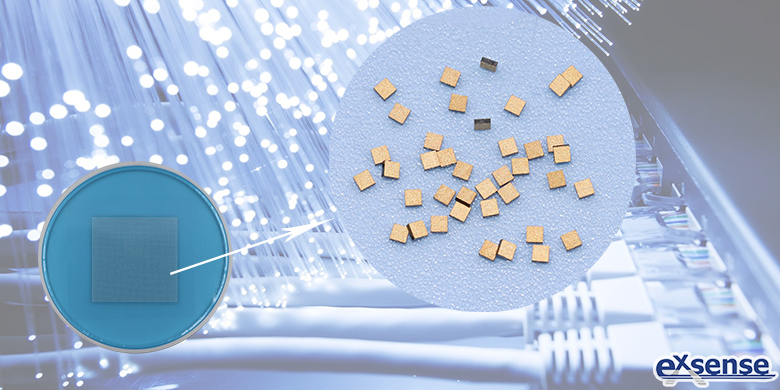
Modern communication is an important material basis and means for people to survive and develop. At present, optical communication technology has been integrated into our life, and it is closely related to our daily life. NTC gold electrode thermistor chip produced, developed and researched by EXSENSE Electronics Technology Co., Ltd., which is suitable for optical communication module, special specifications can be customized according to customer requirements.
On May 15, 1960, T. Maimen, an American scientist, built the first laser of world successfully. As a result, people have started a new journey of information transmission, found a information communication carrier which is large information capacity, good confidentiality performance, strong anti-jamming ability. The rapid development of optical communication, thanks to the special optical fiber, it is a means of communication with laser as a carrier to transmit information effectively.
As early as the 1920s, some scientists proposed the idea of using optical fibers to transmit information and images.. In 1953, Dutch scientist V. Heel published an article about the structure, composition and communication use of coated fibers. In 1954, American scientists H. Hopkins and N. Kapanv conducted a light experiment that used light to decompose and transmit images, which attracted the attention of the field of communication technology and the academic community.
In 1955, K.C. Kao, a Chinese-American scientist, and his assistant, J. Hockham, and others proposed that "The loss is mainly caused by impurities in the material, not by the glass itself." They believe that removing impurities from the glass material to make light-guided fibers can reduce the attenuation rate of light to 20 DB/km. K.C. Kao predicted that when the light beam travels at least 500 meters in a high-purity fiber, there is still 10% of the energy surplus. Their major discovery, which solved the long-standing thorny issue of optical communication carriers, has caused a stir in academic community once again. In 1956, Van Hill produced glass-hearted plastic-coated optical fibers. In 1966, the laboratory of British Standard Communications Corporation calculated through experiments that the attenuation rate of optical fiber must be less than 20 DB/km, confirming the research results of K.C. Kao and others.
In 1970, Corning Corporation of the United States successfully developed pure sand dioxide (quartz) fiber, its fiber attenuation rate is less than 20 DB/km; In the same year, optical fiber communication laser came out. The simultaneous breakthrough of these two technologies is of decisive significance to the application of optical fiber communication. Since the production of fiber requires a large number of high purity quartz, and the extraction of quartz requires a lot of energy, in the process of pulling quartz fiber, the rejection rate is very high, so macro-molecule polymer fiber appeared. Macro-molecule polymer fiber is a composite material that closes the light energy in the fiber and refracts light along the polymer interface at the core. It has excellent optical and physical properties, and which is the ideal material for optical communication.
The working principle of optical communication is, at first the information to be transmitted is converted into an electrical signal at the sending end, then modulated to a laser beam emitted by the optical maser, make the light intensity changes over the frequency of the signal, and sent to the receiver through the optical fiber, finally, the detector at the receiving end receives the optical signal, converts it into an electrical signal, and then recovers the original information after demodulation. The optical maser is the most important part of optical communication, and the laser diode is the core part of the laser head, which has the characteristics of small size, light weight and low power consumption. However, it is very sensitive to overcurrent, overvoltage and electrostatic interference, in use, the temperature increment of laser diode will increase the value of the current flowing through it, therefore, must adopt the necessary cooling measures. At this time, the NTC gold electrode thermistor chip can play the role of temperature detection, in order to ensure that the laser diode in the appropriate temperature range, to avoid the temperature is too high, leading to accidents.



